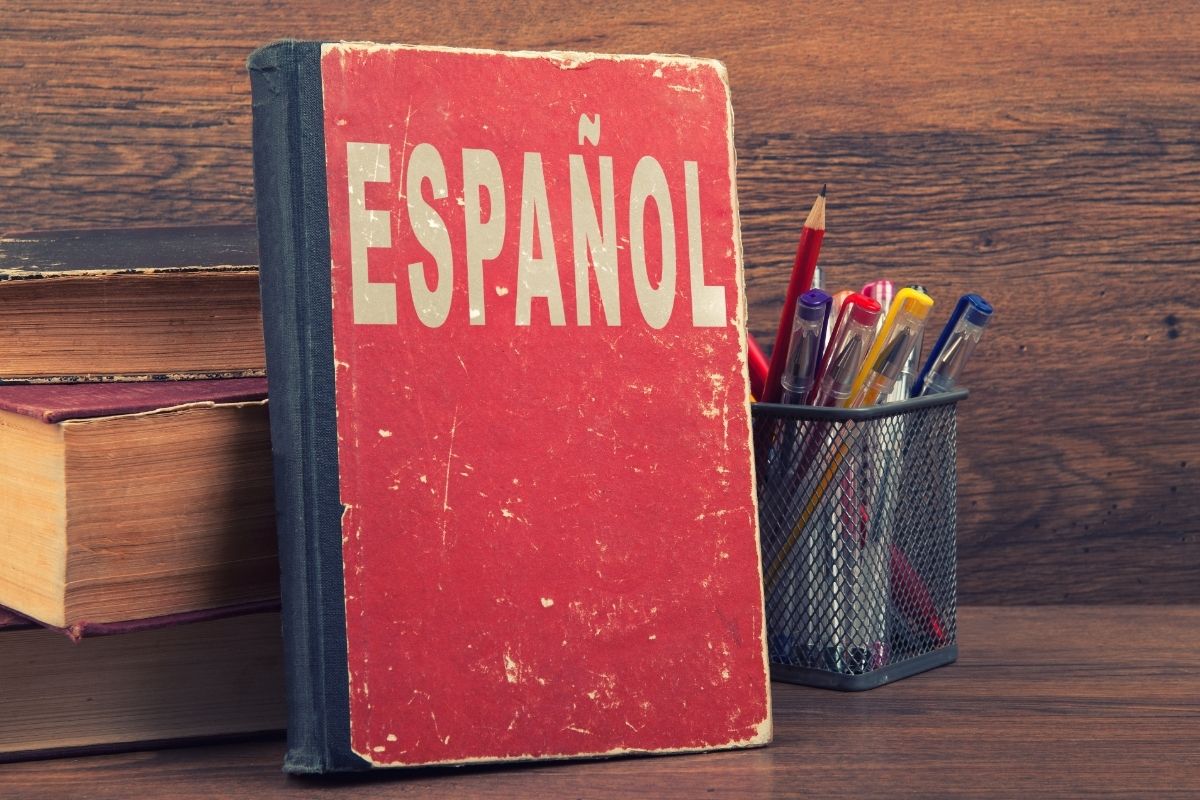Starting to learn a new language from scratch can feel daunting, and learning Spanish is no exception.
If you want to learn Spanish, you will need to start with the basics.

The good news is that because basic Spanish doesn’t involve any advanced grammatical concepts, it’s easy to start learning this language with some simple tips.
In this article, we’ll be giving you 10 easy tips to learn basic Spanish in no time!
What Does ‘Basic Spanish’ Mean?
First, let’s clarify what we mean by ‘basic Spanish’.
Basic Spanish is a language-learning ability level that indicates that the learner can:
- Understand simple words and common phrases
- Write short sentences using simple vocabulary
- Have basic conversations in Spanish
- Read short texts that use common vocabulary
Tips To Learn Basic Spanish
Motivate Yourself
Before you even start learning basic Spanish, you will need to motivate yourself.
Learning a new language can sound exciting at first, but it’s common for learners to get discouraged and lose their enthusiasm as time goes on.
To ensure that you stay motivated as you embark on your Spanish learning journey, take some time to think about why you want to learn Spanish in the first place.
This could be because you’re planning a vacation to a Spanish-speaking country and would like to be able to communicate with the locals.
Maybe you would eventually like to read Spanish literature in the original translation.
Maybe you simply want to challenge yourself to expand your mind and try something new.
Whatever your personal motivation is, keep it in your mind as you start learning basic Spanish.
Reminding yourself of why you want to learn will make you more likely to persevere even when the process isn’t easy.
Incorporate Spanish Into Your Daily Routine
The most effective way to learn basic Spanish is to make space for it in your daily routine.
You are less likely to forget the things you learn if you revisit them and continue your learning each day.
You’ll be pleased to hear that daily Spanish practice doesn’t have to look like sitting at a desk and staring at a textbook.
While you should take time to sit down and learn the theory behind the Spanish language, you can also find ways to work Spanish learning into your everyday life.
If you love to cook, for example, why not try using a recipe written in Spanish?
Similarly, if you usually read before bed, you could find an entry-level Spanish text for this part of your nighttime routine.
Making these simple adjustments will mean that you pick up basic Spanish easily without having to dedicate time exclusively to learning.
Learn The Correct Pronunciation
Many people start their Spanish learning journey by learning the grammar.
While grammar is an integral part of learning Spanish, it’s not what we would recommend to start with.
The first thing you should do when trying to learn Spanish is to familiarize yourself with the correct pronunciation of the different letter combinations in the language.
Learning how to pronounce sounds in Spanish is really important because if you don’t do this early on, it will be difficult to re-learn how you imagined the words to be pronounced.
This will get in the way of your fluency when it comes to speaking.
Therefore, it’s best to learn pronunciations first and focus on grammar later down the road.
Don’t Rush Your Learning
Take it slow!
When you first start learning Spanish, you might be so excited by your progress that you rush through the language-learning stages trying to accumulate as much knowledge as possible.
If you have a goal in mind for learning Spanish (for example, visiting Spain) and you’re excited to accomplish it, you might also be tempted to rush.
However, if you try to learn too much too quickly, you’re likely to forget what you have learned because you won’t give it enough time to sink in.
Instead of rushing your Spanish learning experience, be sure to take time to practice and consolidate your newfound knowledge.
Revisit past topics and spend time speaking, reading, and listening for each new word, phrase, or grammatical rule you learn.
Watch TV With Spanish Subtitles

In addition to actively learning Spanish, we recommend making room for some passive learning as well.
This means that you can continue to learn Spanish outside of your dedicated study time without feeling like you’re overworking yourself.
One of the easiest ways to absorb new Spanish vocabulary is to watch TV with Spanish subtitles.
Doing this will allow you to watch episodes of your favorite show guilt-free because you’re learning Spanish at the same time.
Because you will be enjoying yourself, it’s also more likely that you will retain the information you absorb.
Once you have progressed in your Spanish learning through associating English words with Spanish subtitles, you can eventually progress to watching TV in Spanish with English subtitles.
This will be challenging at first, but it’s a great way to practice your Spanish listening skills.
Read Aloud In Spanish
Reading in Spanish is important because it allows you to familiarize yourself with basic Spanish sentences and learn what Spanish words look like when written down.
However, instead of just reading in your head, we recommend that you read aloud as well.
Reading aloud when learning Spanish will allow you to practice your Spanish reading and speaking skills simultaneously.
A mistake many people make when they start learning Spanish is that they focus only on reading and writing and forget to practice speaking.
Recognizing and replicating words visually might seem like the most important thing when you first start learning Spanish, but you need to be able to speak Spanish with the correct pronunciation if you’re going to visit any Spanish-speaking countries, so be sure to spend some time on this, too.
Make Spanish Flashcards
Going back and revisiting some of the basic Spanish vocabulary and grammar you have learned is important because otherwise, you will probably end up forgetting it.
Flashcards are one of the most effective learning tools for keeping vocabulary fresh in your mind.
On one side of the flashcard, you can write the English word, and on the other, you should write the Spanish word.
Then, shuffle the cards and pick them up one by one.
Hopefully, this will require you to translate from English to Spanish and vice versa, testing your brain to its full potential.
Make a new set of flashcards each time you learn a new topic so that you can start revisiting the vocabulary as soon as possible.
Journal In Spanish
If you already journal on a daily basis, then starting to journal in Spanish could come under the heading of incorporating Spanish into your existing routine.
However, if you don’t journal yet, you should definitely start when you begin learning Spanish.
Journaling in Spanish is one of the best ways to learn new words and practice your existing vocabulary.
Writing about your day will prompt you to look up the words you need to describe your surroundings so you can learn something new every day.
Some of the words you want to use in your journal might be more advanced, so it’s a great way to challenge yourself.
Writing about your daily life in Spanish will help you to build the tools you need to have casual conversations in Spanish.
After all, most of what we talk about with our friends and family is to do with our day-to-day activities.
Listen To Spanish Radio
We’ve already recommended watching TV with Spanish subtitles as an easy way to learn basic Spanish, but if you don’t have time to physically sit down and watch something, you could also try listening to Spanish radio.
Of course, when listening to the radio in a different language, you don’t get the benefit of subtitles to help you match words to their English meaning.
However, simply by listening to something in Spanish, you’ll be able to recognize words you already know and maybe identify other words through context.
Listening to the Spanish radio will also help you with your pronunciation.
Learn From Native Spanish Speakers
If you’re serious about learning basic Spanish and continuing to progress on your Spanish learning journey, you should reach out to one or more native Spanish speakers to help you.
There are many ways you can do this. If you already know someone who is fluent in Spanish, that’s great!
However, there are also programs you can join that match you with a Spanish pen pal.
You could even arrange to go on a Spanish language exchange trip if you feel confident enough.
Someone who speaks Spanish as a first language will always be the best teacher for you, so try to implement this tip if you can.
Conclusion
Thank you for taking the time to consider our top 10 tips for learning basic Spanish.
If you implement these tips into your study routine and daily life, you’ll be progressing to intermediate and advanced Spanish before you know it!
- What Is The Largest Island In Cuba? - September 19, 2022
- Havana – Why Is It Cuba’s Most Exciting City? - September 19, 2022
- Cheapest Time To Visit Cuba (Ultimate Guide) - September 19, 2022








